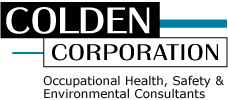OSHA recently unveiled a toolkit for employers and workers, “Transitioning to Safer Chemicals” to engage industry in accelerated research into the viability and substitution of safer chemicals. Elimination or substitution of the most hazardous chemicals aligns with industrial hygiene’s hierarchy of controls and holds the promise of eliminating exposures, reducing accidents, and saving permitting, control equipment, treatment and disposal costs. Substitution may include replacing a chemical with a less hazardous one, using a safer form, such as larger particle size, or changing a process or technology, which eliminates the need for the chemical or its alternative.
High performance building rating systems such as LEED (now in version 4.1), the Living Building Challenge, and WELL – all include incentives for manufacturers to disclose the chemical composition of their building products, and to optimize the use of safer materials. Living Product Challenge and Built Positive are examples of programs that recognize progress in these areas. Architectural firms promoting sustainability and occupant wellness are beginning to work in closer collaboration with industrial hygienists, in order to make informed design choices on behalf of their clients.
In these instances, the industrial hygienist’s role is technical, and supportive of design teams and their clients who are often unfamiliar with the nuances of chemistry and toxicology. We consult with manufacturers, engaging in discussions with upstream raw material suppliers, first discovering, then helping to reduce the use of chemicals with known hazards or finding alternatives with safer profiles. This exploration can lead to candid discussions with chemists in the R&D division, and other professionals in EHS, regulatory affairs, and sales. Discussions focus on composition of building materials and assemblies, internal testing and reporting methods, and options for inherently safer material choices. We also integrate insight from standard documents such as SDSs which provide helpful information such as vapor pressure, odor threshold, GHS classifications, exposure thresholds and safe handling for field-applied products. In our investigations, we identify products with safer chemistry for consideration by architects and their clients.
Leading businesses are seeking to capture what they perceive as emerging market opportunities by redesigning their products and catalyzing change in their supply chains. Industry leaders and investors are among the proponents. Large owners are champions in this area, and we are pleased to be in professional collaboration with them on a number of material health initiatives, including engagement in harmonization efforts across many of the transparency/material optimization platforms.

